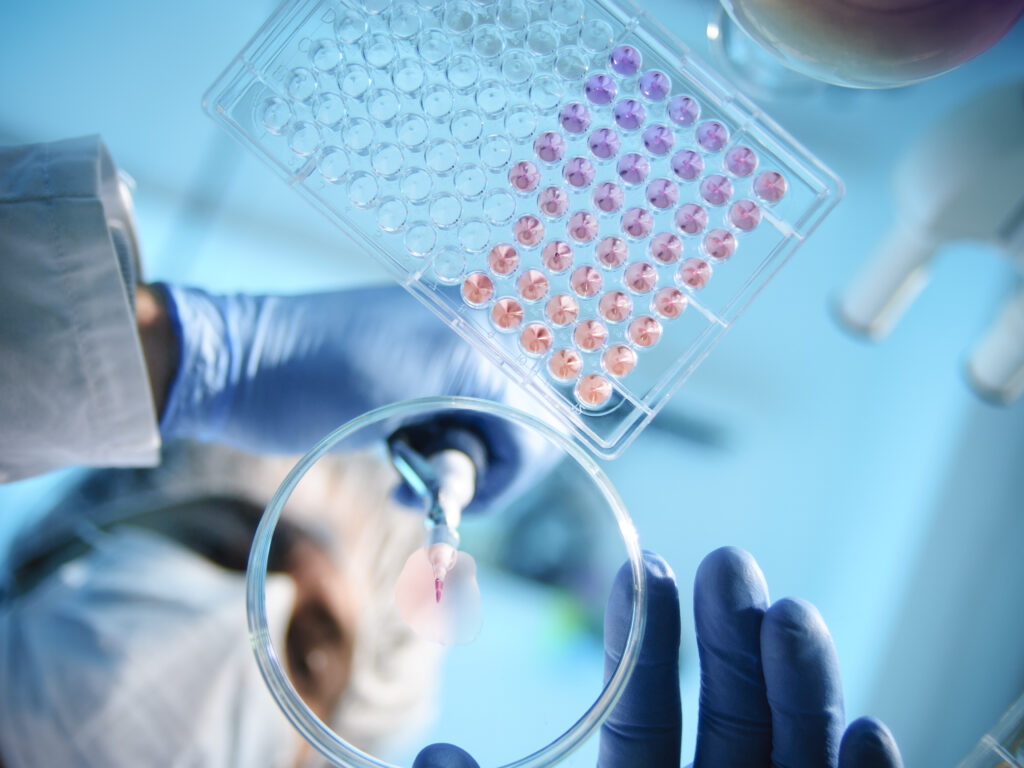
Introduction
Bioprinting, an innovative technology at the intersection of biology and engineering, is revolutionizing the field of regenerative medicine by allowing the precise fabrication of tissues and organs for medical research and therapeutic applications. Unlike traditional 3D printing, which uses plastics or metals, bioprinting uses bioinks—materials composed of living cells—to create detailed biological structures that closely resemble human tissues. This advancement brings about numerous potential applications that can significantly impact healthcare.
One of the most critical applications of bioprinting is addressing the severe shortage of donor organs for transplantation. In the US alone, over 103K men, women, and children are on the transplant waiting list, and every day, 17 people die waiting for an organ transplant. Bioprinting offers a promising solution by enabling the on-demand creation of fully functional organs, potentially reducing transplant waiting times and saving numerous lives.
Another important aspect of bioprinting is its ability to generate intricate biological structures capable of replacing damaged or diseased tissues and organs, addressing the pressing challenge of organ shortages for transplantation. This precision is achieved by depositing bioinks layer by layer to form tissues that integrate well with a patient’s body, reducing the risk of rejection and improving the success rates of medical treatments. The increase in interest in this topic (as seen in Google Trends) underscores its growing importance and wide range of potential uses.
Delving deeper, we will explore how bioprinting impacts regenerative medicine, organ transplantation, drug testing, personalized medicine, and look at some of the key players in this field.
Rising Interest in Bioprinting (2004-2024)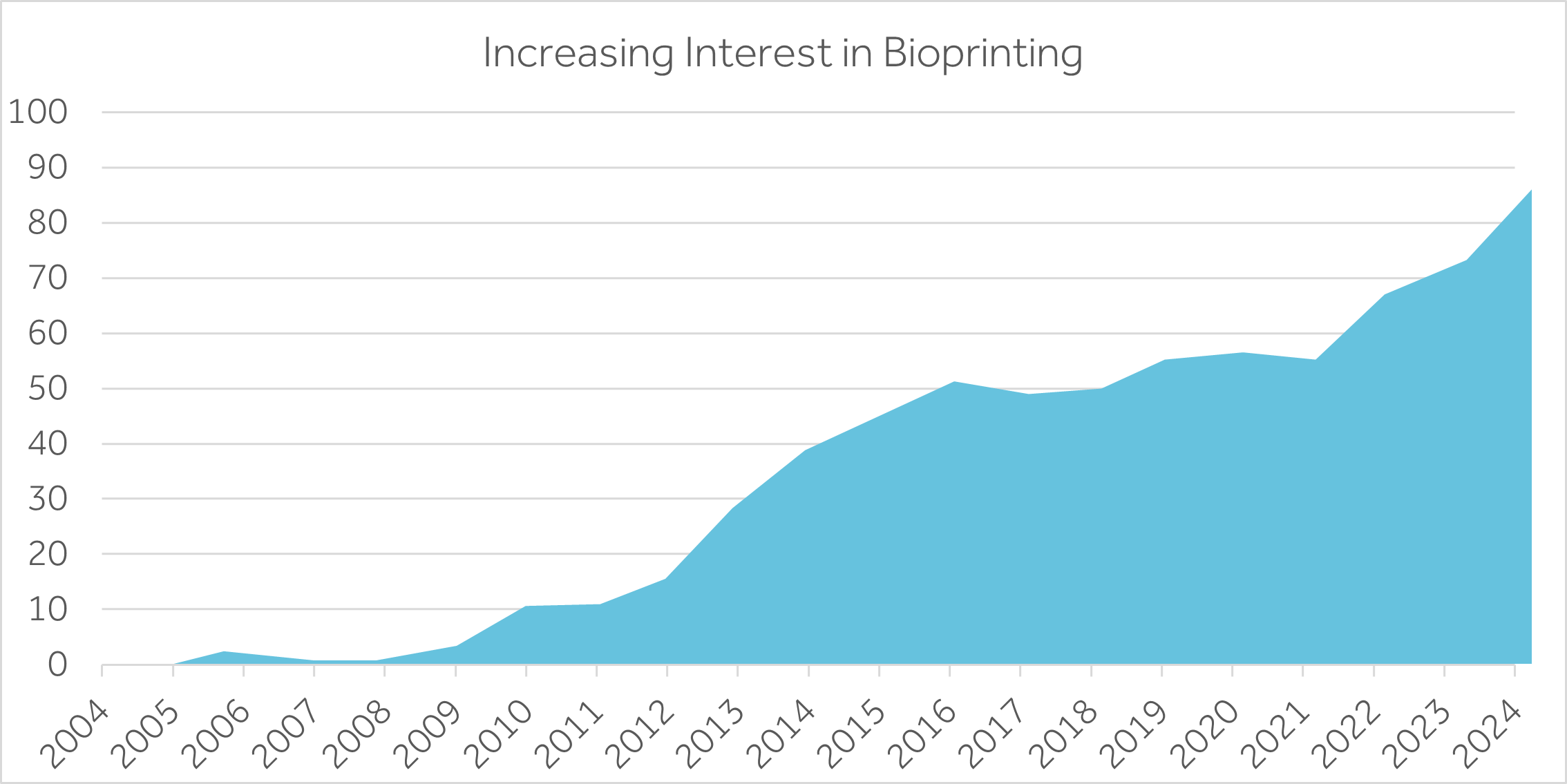
Source: Google Trends
Ensuring Precision with Versatility
One of bioprinting’s biggest advantages is its ability to create highly detailed tissue structures. Researchers at University of Wisconsin-Madison have developed methods to print functional human brain tissue, demonstrating the high level of detail and functionality achievable with bioprinting. This precision is crucial for creating tissues that mimic the natural structure of human tissues, enhancing their integration and functionality within the human body.
Several applications of bioprinting show its versatility. Composite bioinks, which include polymers, bioactive materials, and cells, are used in the 3D bioprinting process. This allows the creation of various biological constructs such as bone, osteochondral repair tissues, vascularization structures, soft tissues, and drug delivery systems. These applications demonstrate the wide range of bioprinting’s potential to address different medical needs.
Some Applications of 3D Bioprinting
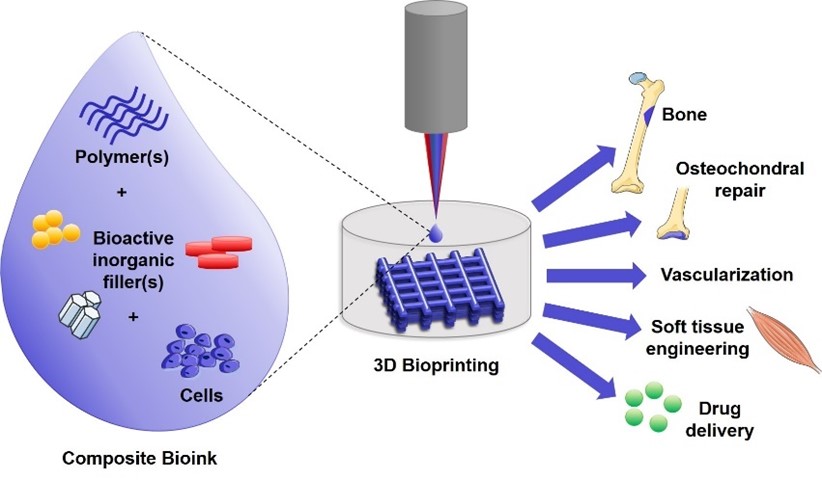
Source: CREAMED
Revolutionizing Drug Testing and Personalized Medicine
Bioprinting is set to revolutionize drug testing and medical research by creating precise models of human tissues. Drug development is a lengthy and costly process, often taking over a decade and costing upwards of $2.3 billion per drug. Traditional methods involve extensive laboratory testing, animal trials, and multiple phases of human clinical trials, which are not only time-consuming and expensive but also pose significant ethical concerns due to the reliance on animal testing.
Bioprinting offers a transformative solution to these challenges. By creating accurate models of human tissues, researchers can study diseases more effectively and test new drugs with unmatched precision. This innovative approach has the potential to drastically shorten the drug development timeline and significantly cut costs. Additionally, bioprinting supports the development of “organ-on-a-chip” technology—small, thumb-sized devices that replicate the functions of entire organs. These devices provide highly accurate platforms for studying disease mechanisms and drug responses, further improving medical research and personalized medicine. By reducing reliance on animal testing, bioprinting addresses significant ethical concerns while accelerating the development of new treatments. This promises a future where effective and safe drugs reach the market faster and at a lower cost, ultimately benefiting patients and healthcare systems worldwide.
Miniaturized Organ-on-a-Chip Device used as a Model for Drug Testing
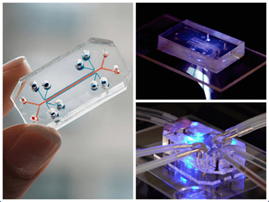 Source: MIT Technology Review
Source: MIT Technology Review
Personalized medicine aims to tailor treatments to the unique characteristics of each patient. Bioprinting plays a key role in this approach by enabling the creation of patient-specific tissues and organs. This customization reduces the risk of rejection and improves the success rates of medical treatments, making them more effective and safer. Recent advancements include the development of synthetic skin for patients with severe burns and customized bone structures for orthopedic applications, showing major advancements in personalized healthcare.
Industry Leaders in the Bioprinting Market
The progress in bioprinting is driven by the efforts of leading industry players. The market encompasses the sale of commercial bioprinters and bioinks (63%) and provision of bioprinting services (37%). Despite the presence of ~100 competitors, a few global players dominate, highlighting the competitive landscape of this dynamic market.
Prominent companies like CELLINK, Cyfuse and Organovo, are at the forefront of commercial bioprinting technology. These companies are not only advancing the capabilities of bioprinting but are also setting the stage for future innovations that could revolutionize fields such as regenerative medicine and personalized healthcare.
Key Global Players in 3D Bioprinting
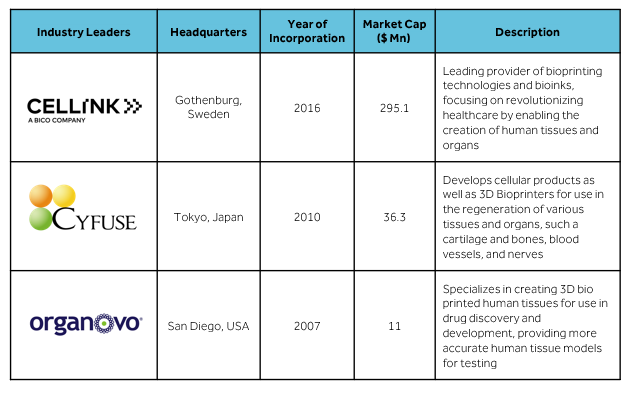
Source: Emergen Research
Conclusion
As bioprinting technology continues to advance, its impact on regenerative medicine will become increasingly significant. The ability to create precise, customized tissues and organs addresses critical challenges in healthcare, from organ shortages to the need for personalized treatments. Bioprinting not only opens new avenues for medical treatments but also offers opportunities for investment and collaboration in cutting-edge research.
For incumbents and startups, bioprinting represents a major advancement in the field of regenerative medicine. Its potential to change medical research, improve drug testing, and provide ethical and economic benefits makes it a transformative technology. As we continue to explore and develop this field, the future of healthcare looks promising, with bioprinting leading the way in innovation.
References:
- University of Wisconsin-Madison (2024)
- U.S. Department of Health & Human Services (2024)
- Google Trends (2024)
- MIT Technology Review (2024)
- Genetic Engineering and Biotechnology News (2023)
- Emergen Research (2022)
- Springer Research (2022)
- Ken Research (2021)
- Creamed (2021)
Related articles
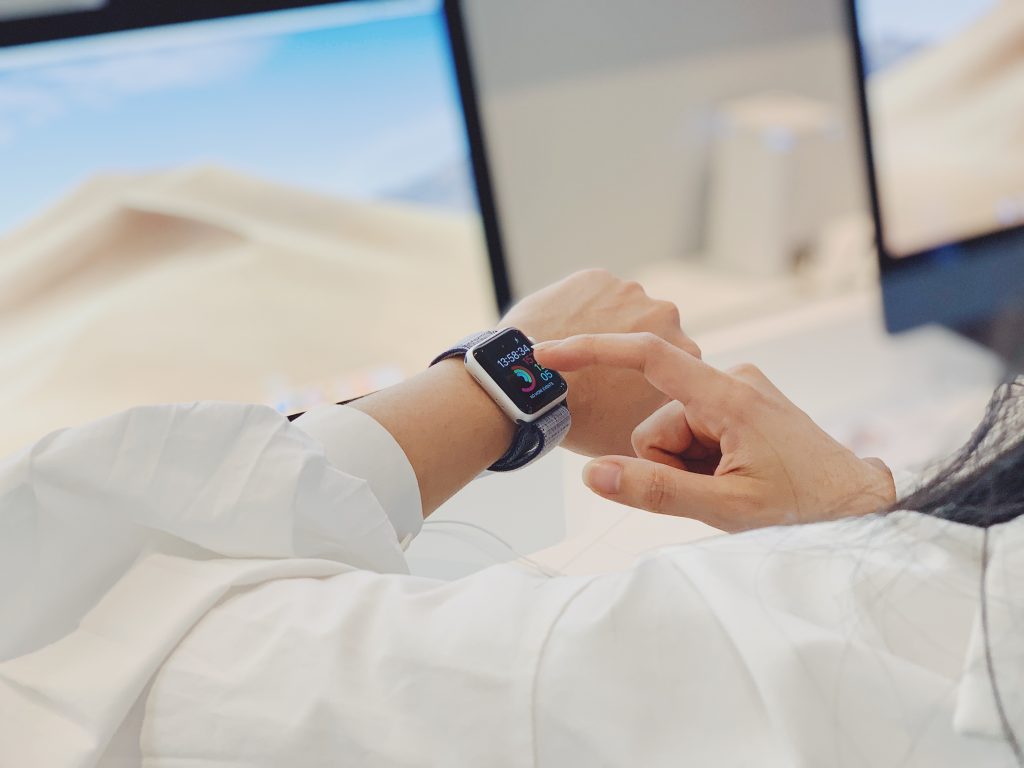
Everyday Health Meets Intelligence: The Evolving Role of Wearables

AI-Powered Diagnostics: The Future of Identifying Diseases Faster and Smarter
